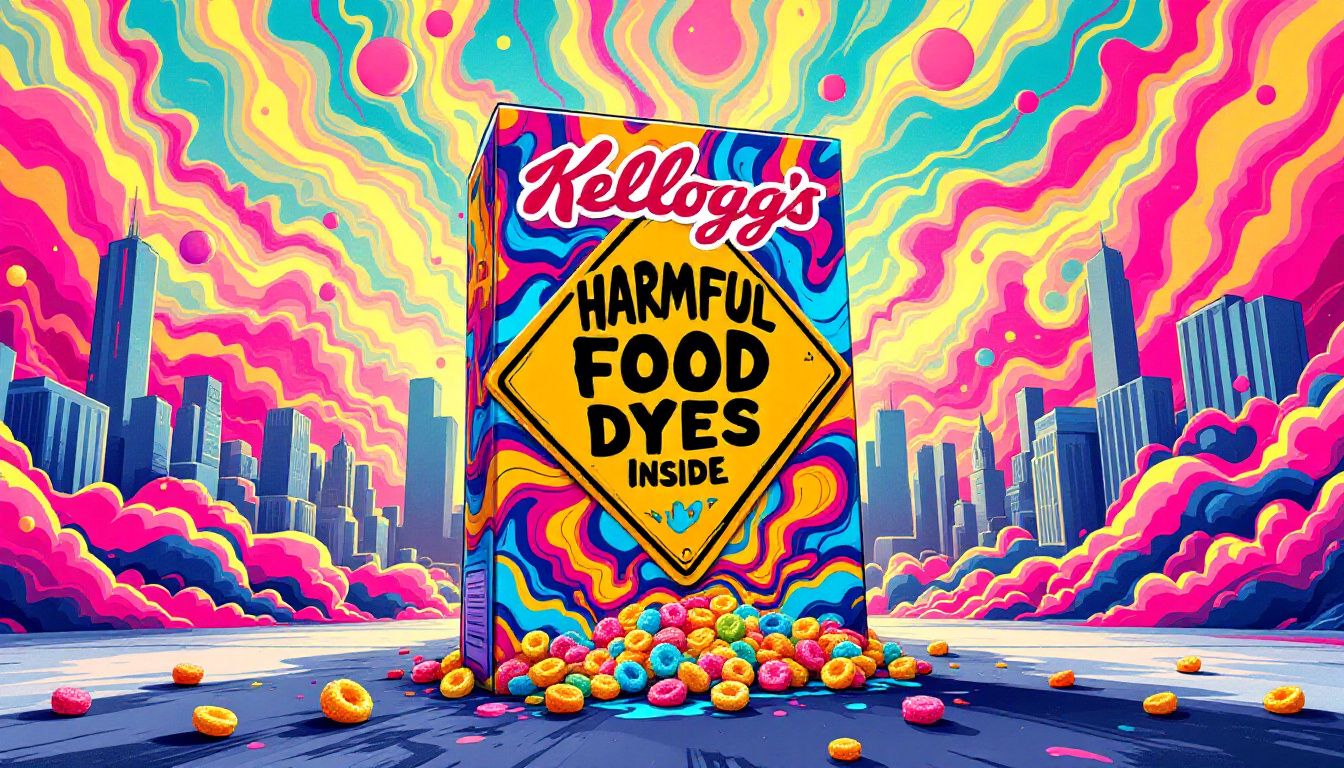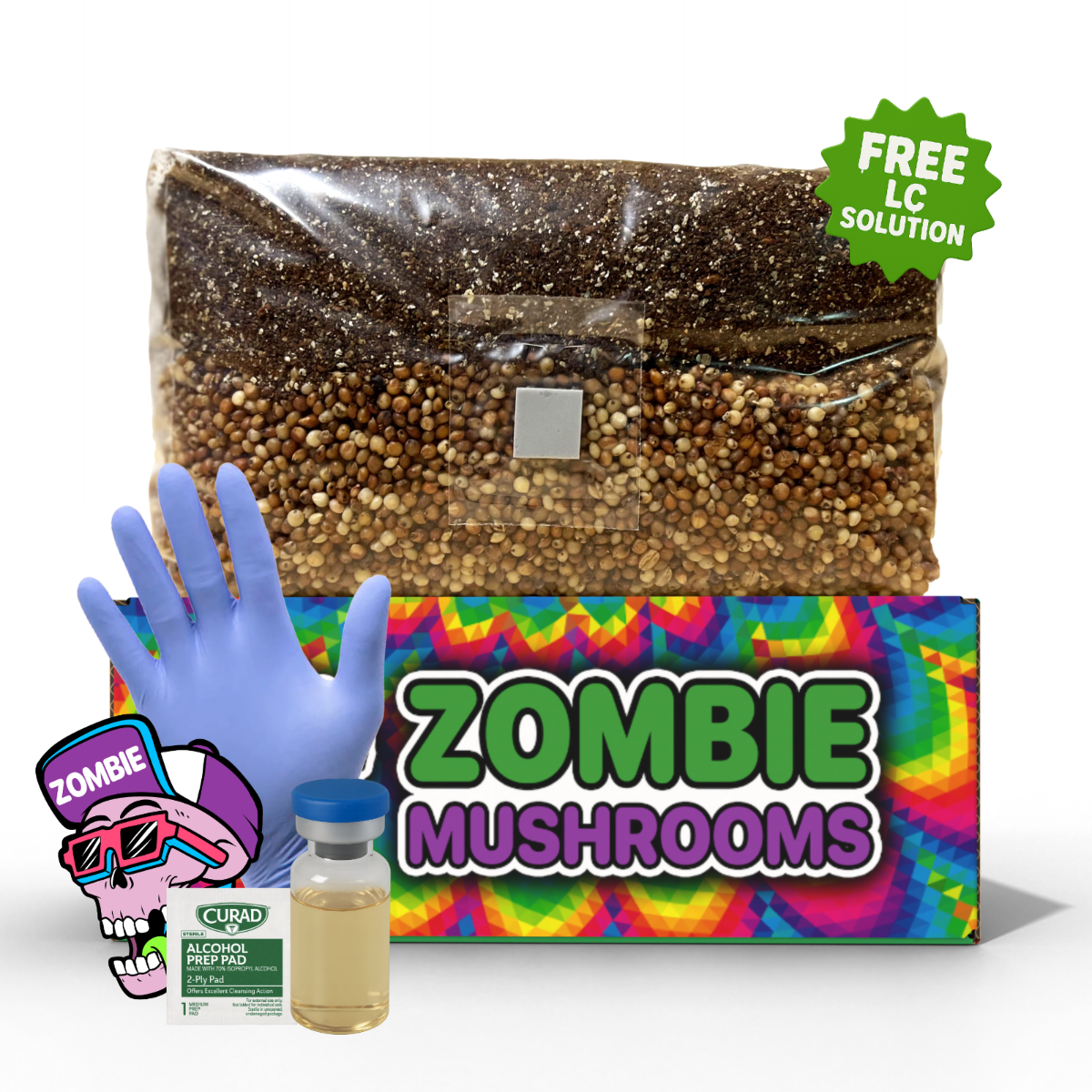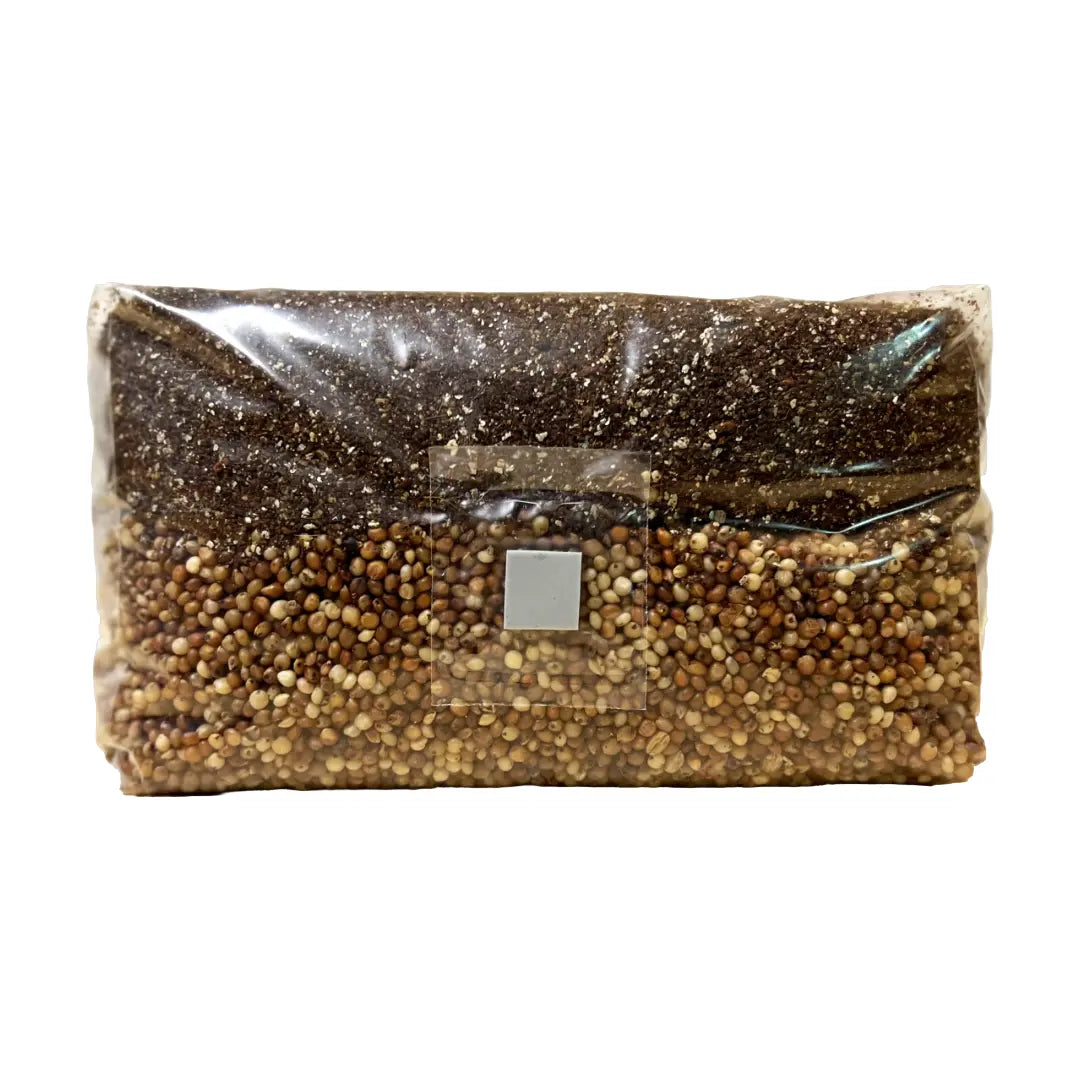What Kellogg's Food Dye Protests Teach Us About Artificial Additives, Public Health, and How Mushrooms Could Be the Natural Alternative
The ongoing debate over artificial food dyes in the food industry has once again reached a boiling point, with Kellogg's facing intense criticism for its continued use of synthetic additives in its best-selling breakfast cereals. What began as a protest outside the company’s Michigan headquarters has since evolved into a larger discussion surrounding public health, consumer trust, and the need for natural alternatives in processed foods.
Surprisingly, one of the most promising potential solutions to the problem comes from an unlikely source—mushrooms. With tools like liquid culture, researchers and innovators are exploring how fungi can provide natural pigments that could replace synthetic dyes altogether.
This article will unpack the story behind the Kellogg’s controversy, delve into the growing concerns about artificial food dyes, spotlight the shifting consumer demand for cleaner labels, and explore how mushrooms could offer an innovative, sustainable path forward for the food industry.

1. The Kellogg’s Protests: A Decade-Old Broken Promise
This week, Kellogg's Michigan headquarters became the site of fervent protests as hundreds of parents, health advocates, and concerned citizens called for an end to the use of artificial dyes, such as Red 40, Yellow 5, and Blue 1, in popular cereals like Froot Loops and Apple Jacks.
Consumers are particularly frustrated because the company had made a public promise almost a decade ago. In 2015, Kellogg’s pledged to remove artificial colors and flavors from its U.S. products by 2018. While progress has been reported in other countries—such as Canada, where Froot Loops is already produced using natural fruit and vegetable concentrates—the company has yet to follow through on its commitment within the United States.
The discrepancy between international formulations and products sold domestically is a recurring sore point. Critics argue that if multinational companies like Kellogg’s are willing to reformulate products for foreign markets, why not offer the same safer, healthier alternatives to American families?

2. Why Are Customers So Upset? Understanding the Health Risks of Artificial Food Dyes
At the core of consumer backlash is mounting evidence that artificial food dyes may not be as harmless as they seem. These synthetic additives, derived from petroleum and coal, are used in processed foods to create bright, appealing colors. However, they have been associated with several adverse health effects, particularly in children.
The Risks: What Does the Science Say?
-
Hyperactivity and ADHD-Like Symptoms
Studies have repeatedly suggested a link between artificial food dyes and behavioral issues in children. In particular, Red Dye No. 40 (commonly found in brightly colored cereals) has been flagged for its potential neurobehavioral effects. Parents often report noticeable improvements in their children’s focus and mood when these additives are removed from their diets. -
Neurological Concerns
According to a 2021 report by the California Environmental Protection Agency, many artificial food dyes may have subtle but concerning effects on the nervous system. This report also revealed that current U.S. regulations, some dating back to the 1970s, are grossly outdated and fail to account for modern scientific findings. -
Allergic Reactions
Some individuals have heightened sensitivities to synthetic additives, experiencing symptoms such as hives, headaches, and even respiratory issues. These consequences underscore the need for natural, allergen-free coloring alternatives.
-
Gut Health Implications
While less studied, there is growing speculation that synthetic dyes might disrupt gut bacteria—critical for overall physical and mental health.
Why It Matters to Parents
The implications hit home for parents, who often feel blindsided by the extensive use of artificial dyes in products marketed to children. With studies suggesting a direct impact on mood, focus, and mental well-being, many parents are sounding the alarm and demanding better options.

3. A Step Forward: California’s Groundbreaking School Food Safety Act
A pivotal moment in the fight against synthetic dyes occurred recently with the approval of California’s School Food Safety Act. Enacted in 2024, this legislation prohibits the use of six artificial food dyes in any meal served at public schools throughout the state. Importantly, this list includes Red 40, Yellow 5, and Blue 1—all common dyes found in Kellogg's cereals.
By implementing this ban, California sends a strong message to food manufacturers: toxic additives have no place in meals designed for children. The law also lays bare the near-obsolete standards of the FDA, which has failed to act decisively despite mounting evidence against these dyes.
California’s influence as a trendsetter in food and health regulations means other states are likely to follow suit. For Kellogg's and other food giants, this presents an existential decision—either adapt and reformulate, or risk losing relevance in the face of growing consumer demand for cleaner products.

4. Clean Eating: The Rise of the Consumer Demand for Transparency
Rising from the ashes of public discontent with artificial additives is the powerful clean eating movement, which champions foods free of synthetic preservatives, GMOs, and dyes. Consumers are increasingly scrutinizing ingredient labels, asking for transparency, and preferring brands that prioritize health.
Clean Labels: The New Normal
The concept of "clean labeling" has emerged as a powerful driver of choices in the grocery aisle. Shoppers are looking for products that feature simple, easily recognizable ingredients. Brightly colored cereals like Froot Loops—most of whose appeal lies in their visual allure—are now under renewed scrutiny.
Activist Voices Amplifying the Call for Change
Figures like Vani Hari, better known as “The Food Babe,” have been instrumental in pressurizing food companies to prioritize public health. Activists like Hari are pushing for complete transparency from manufacturers and have already influenced companies like Kraft and Starbucks to reformulate their products. There’s a clear message to major corporations: adapt or face consumer backlash.

5. Mushrooms as a Natural Alternative: A Quiet Revolution in Food Coloring
Amidst the growing disillusionment with synthetic additives, mushrooms have quietly emerged as a surprisingly effective alternative for natural food coloring. These fungi are not just experiencing a renaissance in culinary circles for their taste and nutritional benefits, but also for their potential to revolutionize food technology.
How Mushrooms Can Replace Artificial Dyes
Certain types of mushrooms, such as polypores and brightly pigmented fungi, naturally contain bioactive pigments like carotenoids, melanins, and anthraquinones. These pigments can be extracted and used to create vibrant shades of orange, yellow, brown, and red—perfect for replacing artificial counterparts like Red 40 and Yellow 5.
Additionally, mushroom-derived pigments are not just colorful; they come with inherent health benefits. Unlike synthetic dyes, which pose risks, mushroom-based colorants can enhance nutritional profiles with antioxidants and immune-boosting compounds.

6. Mushroom-Based Innovations in Food Technology
Mushrooms are truly a game changer in food systems—not just because they can replace artificial colorants, but because they intersect seamlessly with sustainability and wellness.
Applications of Mushrooms in Food:
-
Meat Substitutes
Mushrooms such as oyster and portobello serve as excellent bases for plant-based meats, offering a rich umami flavor and a meaty texture. -
Functional Superfoods
Fungi like reishi, chaga, and lion’s mane are being incorporated into beverages, powdered supplements, and snacks for their nootropic (cognitive-enhancing) and adaptogenic properties. -
Sustainability
Mushrooms grow on agricultural waste, straw, and sawdust, making them one of the most eco-friendly crops on planet Earth. As the global population rises and conventional farming places higher demands on land and water, mushrooms stand as a highly scalable, low-impact alternative.

7. A Healthier Outlook: Mushrooms vs. Artificial Additives
The contrast between mushrooms and synthetic dyes couldn’t be more stark. Whereas synthetic dyes carry potential risks, mushrooms provide a wealth of health benefits:
-
Immune Boosting
Fungi like reishi and turkey tail are loaded with beta-glucans, which fortify the immune system. -
Cognitive Support
Lion’s mane has been shown to stimulate nerve regeneration and cognitive function, a compelling benefit for children and adults alike. -
Gut Health
As prebiotic organisms, mushrooms fuel the gut’s microbiome, encouraging overall wellness.

8. From Protests to Solutions: What’s Next for the Food Industry?
As consumer awareness grows and legislative actions like California’s School Food Safety Act gain momentum, corporations face mounting pressure to reformulate their products. Mushrooms are poised to play a leading role in this transition, offering a powerful combination of sustainability, health benefits, and practicality.
Already, startups and established food brands are beginning to experiment with mushroom-based innovations, including dyes, food products, and packaging materials. Restaurants, upscale markets, and manufacturers who remain ahead of the curve are reaping the benefits of aligning with consumer preferences.

9. Practical Steps for Consumers
What can consumers do to push for change and incorporate natural alternatives like mushrooms into their lives?
- Check Ingredient Lists: Educate yourself about common artificial additives. Avoid products containing Red 40, Yellow 5, and other synthetic dyes.
- Support Natural Foods: Opt for brands that use natural colorants or promote transparency in their labeling.
- Experiment with Mushrooms: Incorporate mushroom-based foods into your meals and explore products made with fungi-derived pigments.
- Advocate for Change: Sign petitions, contact companies, and support legislation that prioritizes safer food systems.
10. Key Takeaways
- Consumer Voices Matter: Companies like Kellogg’s are facing real pressure because modern consumers are increasingly demanding clean, transparent, and healthier label options.
- Health Concerns Are Real: Scientific evidence shows that artificial dyes like Red 40 and Yellow 5 can negatively affect behavioral health, especially in children.
- California Leads by Example: The School Food Safety Act sets a precedent for removing harmful dyes from children’s meals and could inspire nationwide reform.
- Mushrooms Hold Untapped Potential: Mushrooms are emerging as a natural, health-focused solution for food coloring and can also support sustainable food production.
- Take Action: By reading labels, choosing natural alternatives, and advocating for cleaner products, consumers have the power to shift the entire food industry toward a healthier future.
The protests against Kellogg’s aren’t just a flashpoint in a debate about artificial dyes—they’re a harbinger of change in the food industry at large. With natural alternatives like mushrooms gaining traction, the possibility of a cleaner, healthier food system is no longer a distant dream but an achievable reality.



